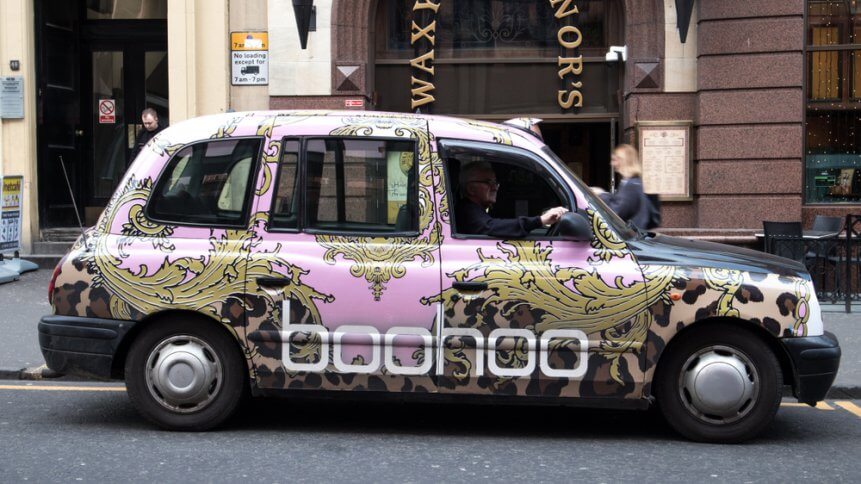Preparing your business for the winds of change

The wave of technological change— or digital transformation — is continuing to transform multiple industries and reshape the business landscape. Leaders are exploring how digital technology can enhance their brand and meet the rising expectations of customers.
Rather than seeing the world through the eyes of B2B and B2C, teams are upgrading their strategies with a people-to-people (P2P) mindset.
But why has it taken us so long to grasp that both businesses and websites are built by people to be used by people, with the same expectations as consumers? Or that we buy solutions, but we connect with people.
Companies continue to dismiss terms such as P2P and digital transformation as nothing more than a fad or another round of tech buzzwords to ignore. However, burying heads in the sand and continuing with a strategy that helped you achieve success in an analog world will have a very different ending in 2020.
AI and data might be at the heart of the rising experience economy and the personalization of everything. But it’s the changing habits, expectations, and mindsets of humans that are transforming multiple industries.
A combination of technology and people are responsible for the passing of the virtual baton from the old guard to new businesses with a more digital mindset.
The old guard vs. digital businesses
BooHoo, the British online clothing retailer, saw its market value rocket over the holiday season to phenomenal £3.89 billion (US$5 billion). In doing so, the fashion firm overtook the 136-year-old Marks & Spencer that is now estimated to be worth £3.7 (US$4.8 billion) after losing 10 percent of its value last week.
The 21st century retail story highlights how consumers are changing how they shop and how younger consumers get that fashion fix from their smartphone. Nobody is too big to fail or get behind and the fact that since 2000, 52 percent of companies in the Fortune 500 have disappeared as a result of digital disruption.
Only 12 percent of the original Fortune 500 companies in 1955 remain, which further hammers home the point that change is inevitable. It was recently revealed that an incredible £10.1 billion (US$13 billion) was invested in British technology start-ups last year.
The 44 percent increase in tech investments is particularly impressive, considering the uncertainty that continues to surround Brexit.
Do you see disruption or opportunity?
The pace of change is continuing to race ahead at breakneck speed. But when you combine this with the rise of younger tech companies that execute faster than their sluggish competitors, we can expect a few more shocks on the horizon.
Whether you see disruption or an opportunity ahead is quite telling. But the secret is to dare to look beyond the catalyst of unrelenting technological change. The digital economy consists of nearly three billion consumers across a range of businesses and institutions of every nature that all share one thing in common.
They communicate, interact, do business, and shop from a myriad of devices.
YOU MIGHT LIKE

Majority of workloads will go to cloud in 2020
How can your business remain relevant?
Rather than regurgitating last year’s plan, every business has an opportunity to build a new business strategy built to thrive and survive in a digital age. However, those that succeed are not the ones that panic buys the latest off-the-shelf solutions.
Innovative organizations try to understand the subtle changes in their customers’ behavior and the main business drivers of their peers. By arming yourself with the insights to make data-driven decisions, you unlock the ability to move forward with confidence.
Putting technology on its own at the heart of everything you do is possibly the worst mistake you can make. Only when the right plan is in place should technology be explored to help accelerate growth and meet your business objectives rather than disrupt your business.
The road ahead
Amazon is widely tipped to make a significant move into the world of bricks and mortar. In doing so, they could tear down the barrier between online and offline. Retailers and e-commerce sites are also increasingly turning to eye-tracking to obtain more data-driven insights around customer behavior.
However, as every swipe of a screen, mouse click, and even our eye movement create a deluge of unique data about us, data exploitation looks inevitable.
Personalization technology vendors who have software to sell will tell you that it’s what your customers expect. But what they don’t tell you is too much of personalized advertising will be deemed as creepy.
Much to their chagrin, many businesses are learning that the path to AI adoption is much slower than they were told in sales pitches. But the rise of digital experience platforms (DXP) is making it easier for brands to get up and running.
Emerging technologies such as AI, IoT, 5G, cryptocurrency, and an increasing reliance on voice search are changing not only how we shop but how we live too. It’s time for businesses to eradicate silos and explore how they can come together as one team to adapt to this continuously changing new digital world.








